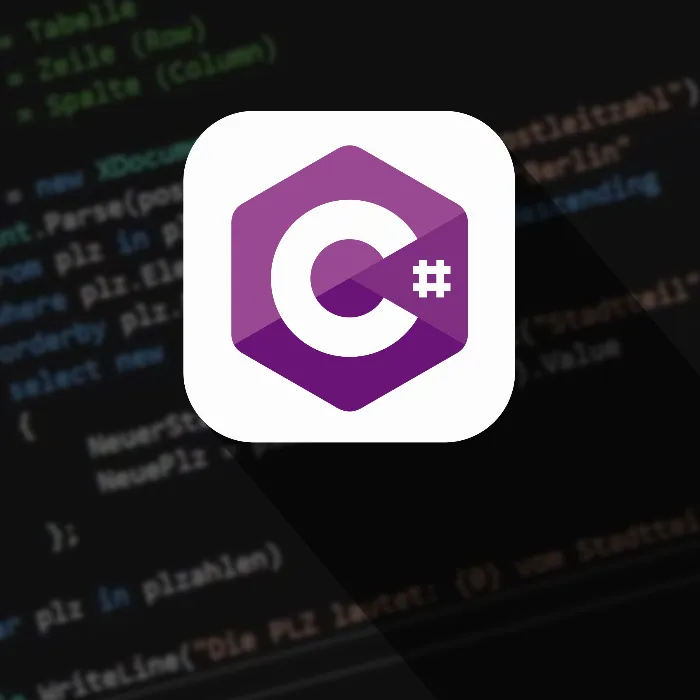Are you planning to customize your development environment a bit? Sometimes the standard installation is not enough, and you need to subsequently install components or language packs in Visual Studio. Although it may seem complicated at first glance, the process is relatively simple and straightforward. Let’s go through step by step how you can expand your Visual Studio installation to optimize your programming experience.
Main Insights
- You can install additional language packs and components in the Visual Studio Installer.
- Language packs allow you to customize the user interface to your preferred language.
- Installing additional components may take a few minutes depending on your internet connection.
Step-by-Step Guide
First, you need to make sure Visual Studio is installed on your computer. If you have already done that, you can start with the following steps to install language packs or components.
To open the Visual Studio Installer, first go to your Start menu and search for "Visual Studio" or open Visual Studio directly. At the bottom of the window, you will see the "Visual Studio Installer". Click on it to start the installer.
In the installer, you will see the displayed version of Visual Studio that you have installed. To make changes to your installation, click the "Modify" button. This allows you to add other components or language packs or remove already installed items.
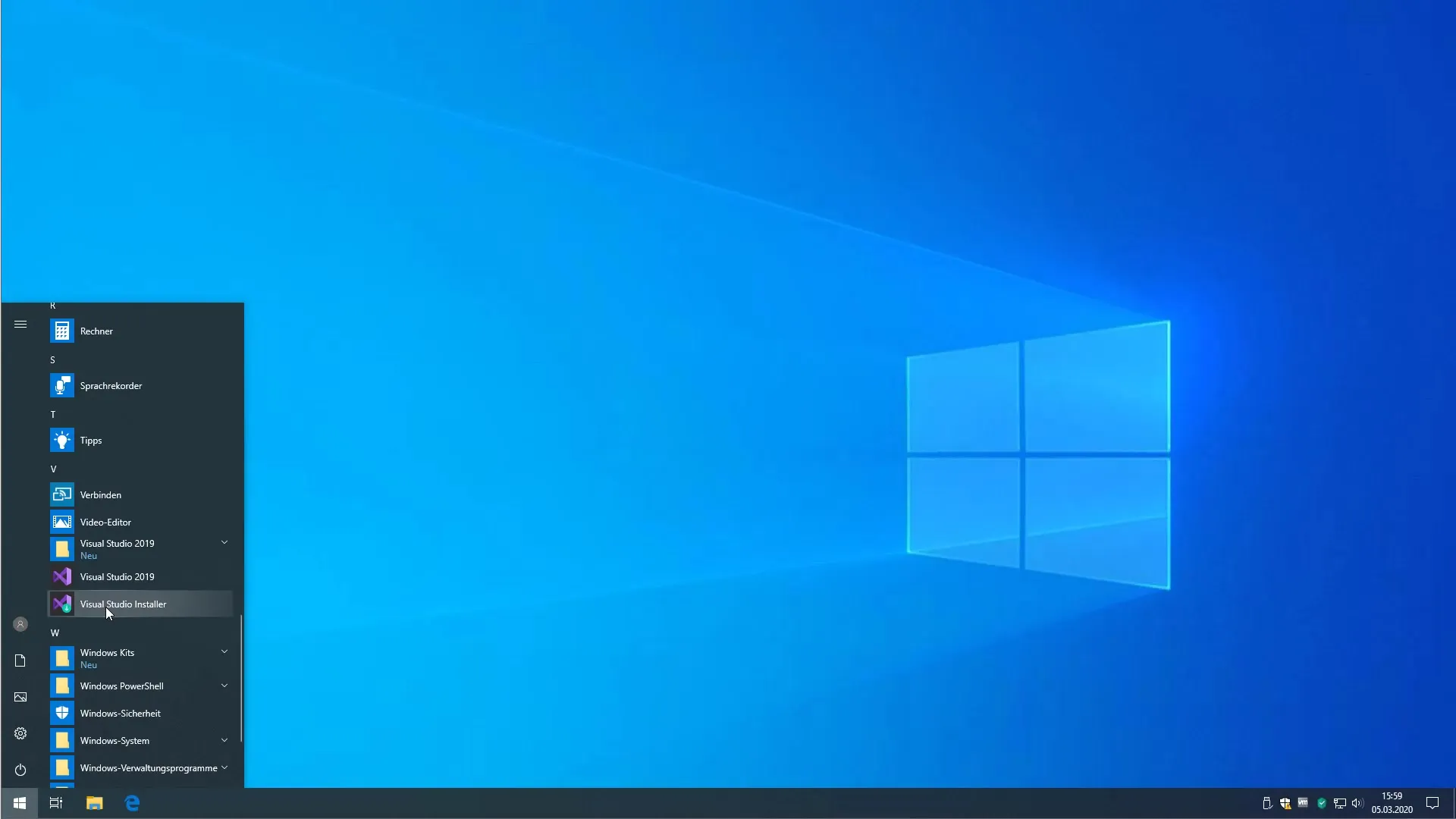
After clicking "Modify", you will see an overview of the available workloads. Here you can choose between different components and language packs. For example, if you want to add a language pack, you will find the corresponding options in this dialog.
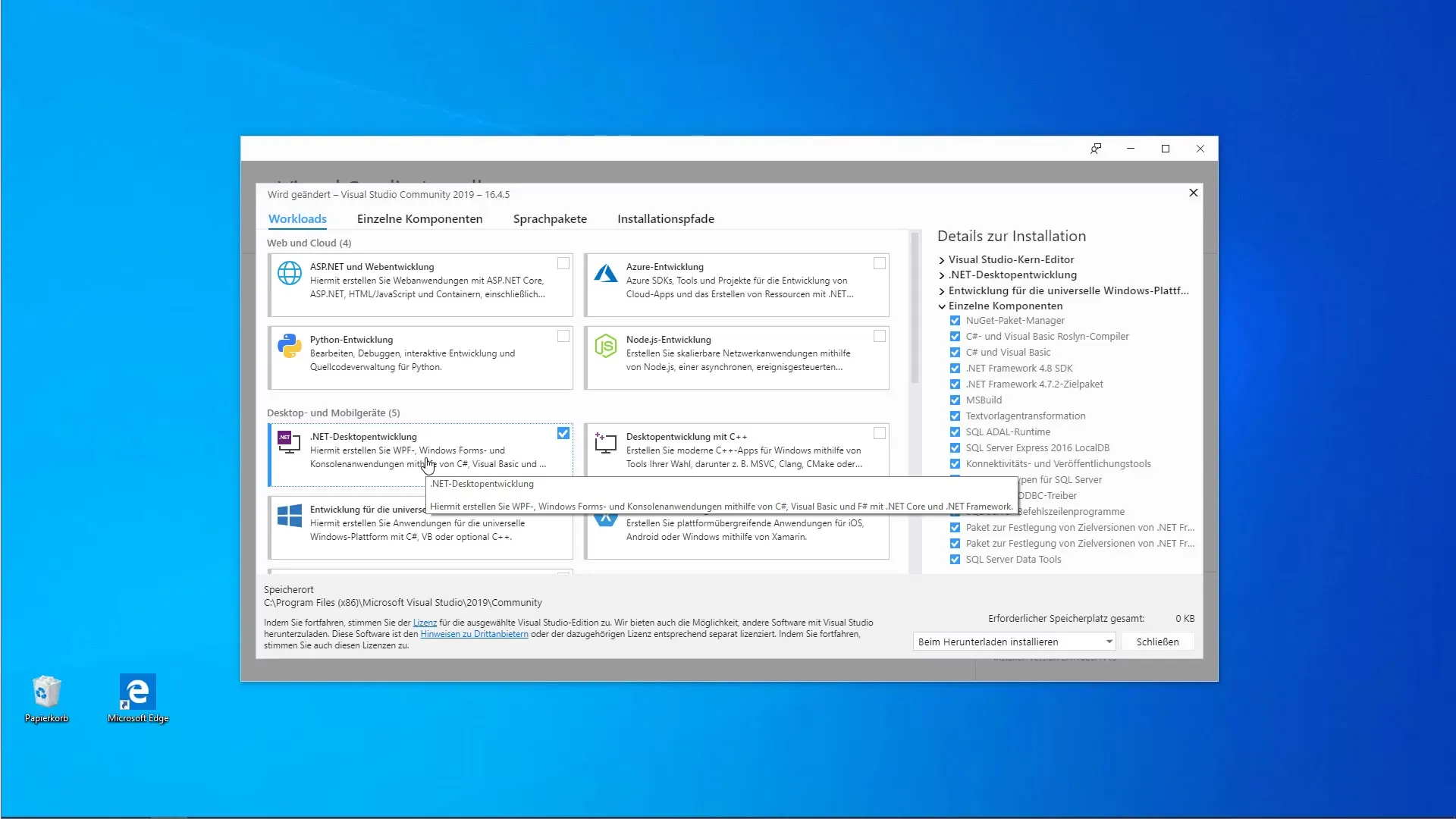
In our example, we want to add a language pack. Let’s assume that the German language is already installed and you want to add English. Select the "English" language pack from the list by clicking on it.
After making your selection, click the "Modify" button. This initiates the installation process for the desired language pack. It may take some time to complete, depending on the speed of your internet connection.
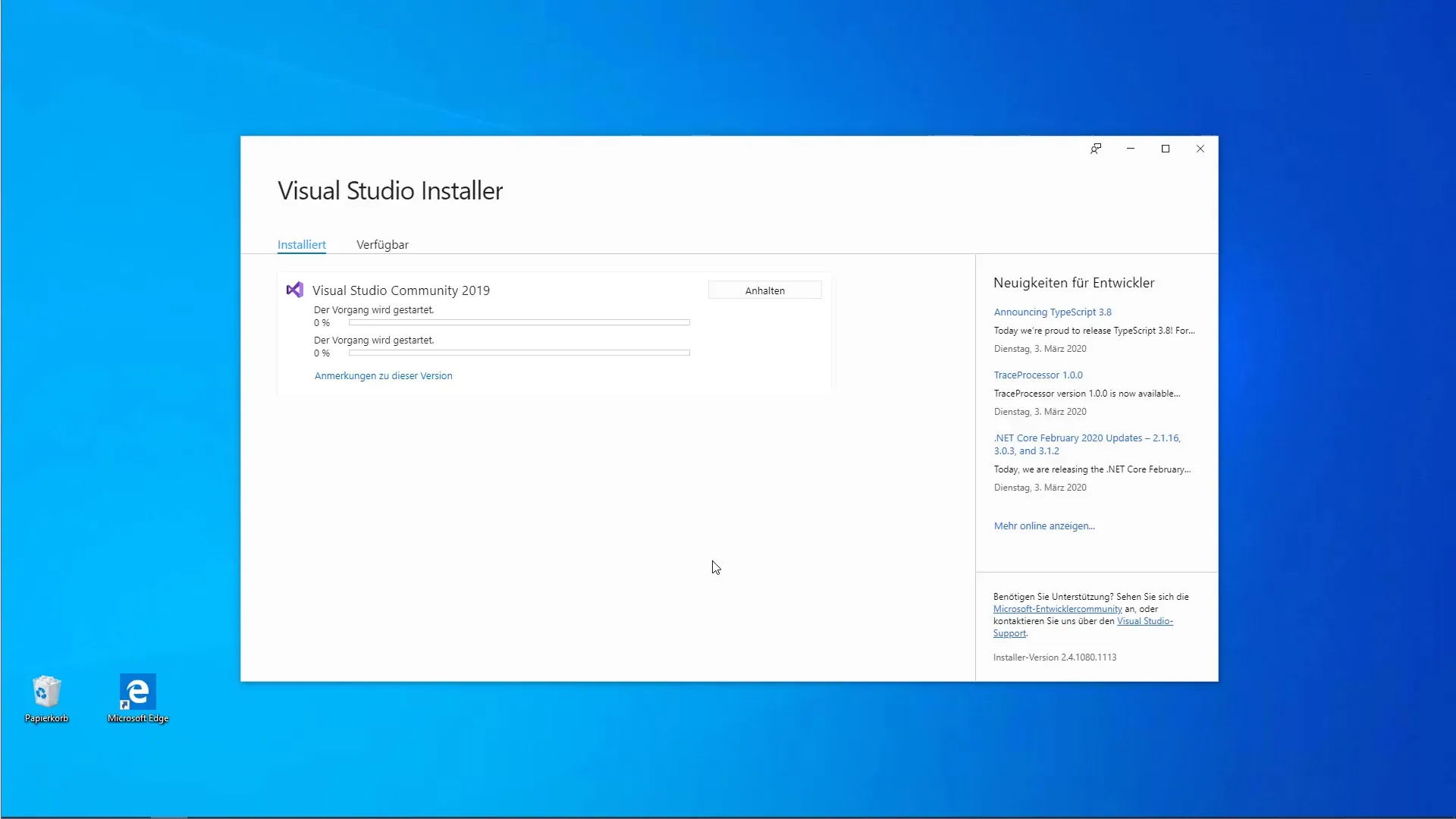
Once the installation is complete, you will see a confirmation. You now have the option to make further changes or start Visual Studio. In this case, simply click the "Start" button to apply your changes.
When Visual Studio has started, go to "Tools" and click on "Options". In this menu, you can change the language of the user interface. If you have successfully installed the language pack, you should now be able to choose between different languages.
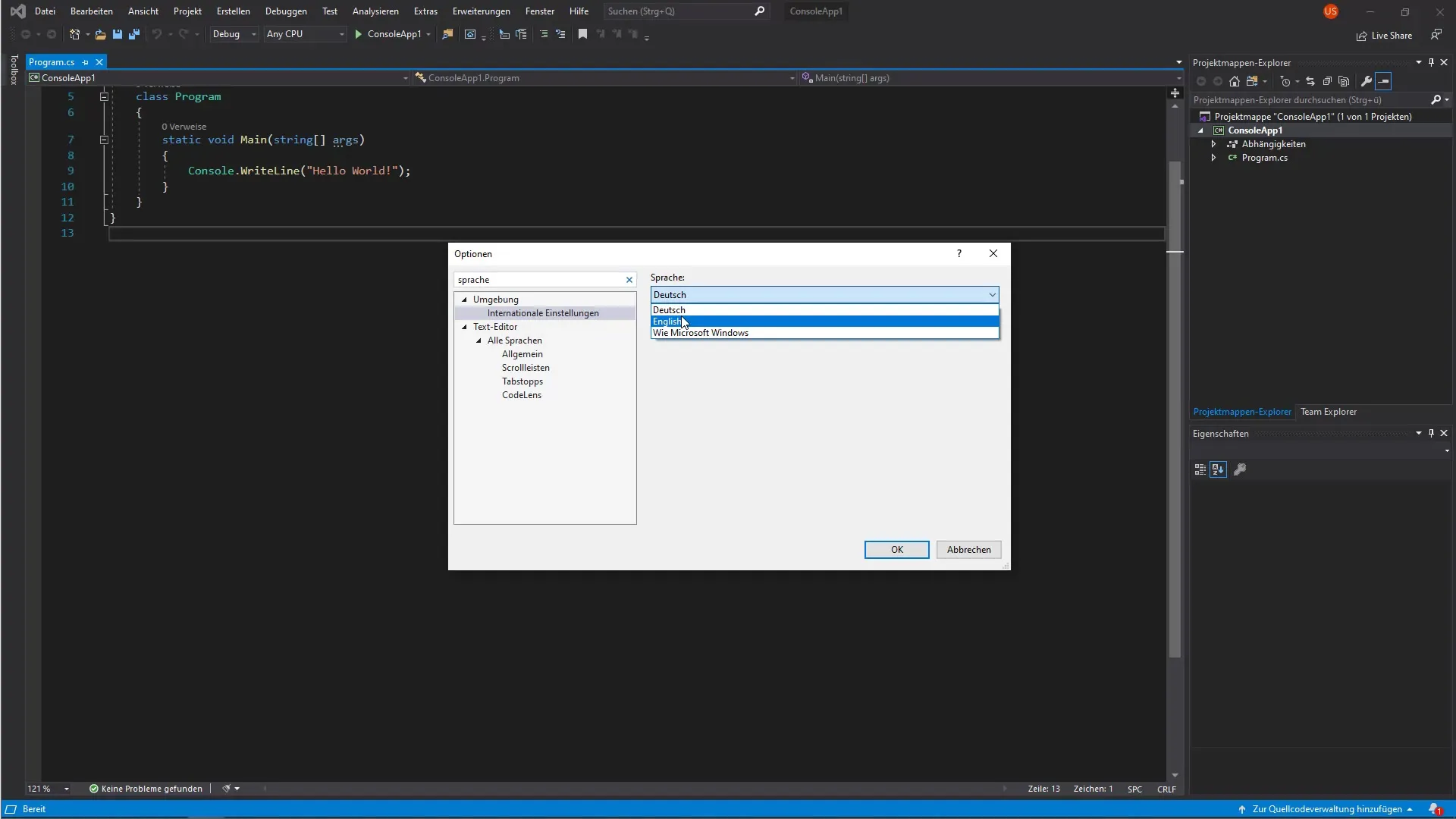
Check if English is available in the international settings. Click on English to change the language. After making these changes, click "OK" to confirm your selection.
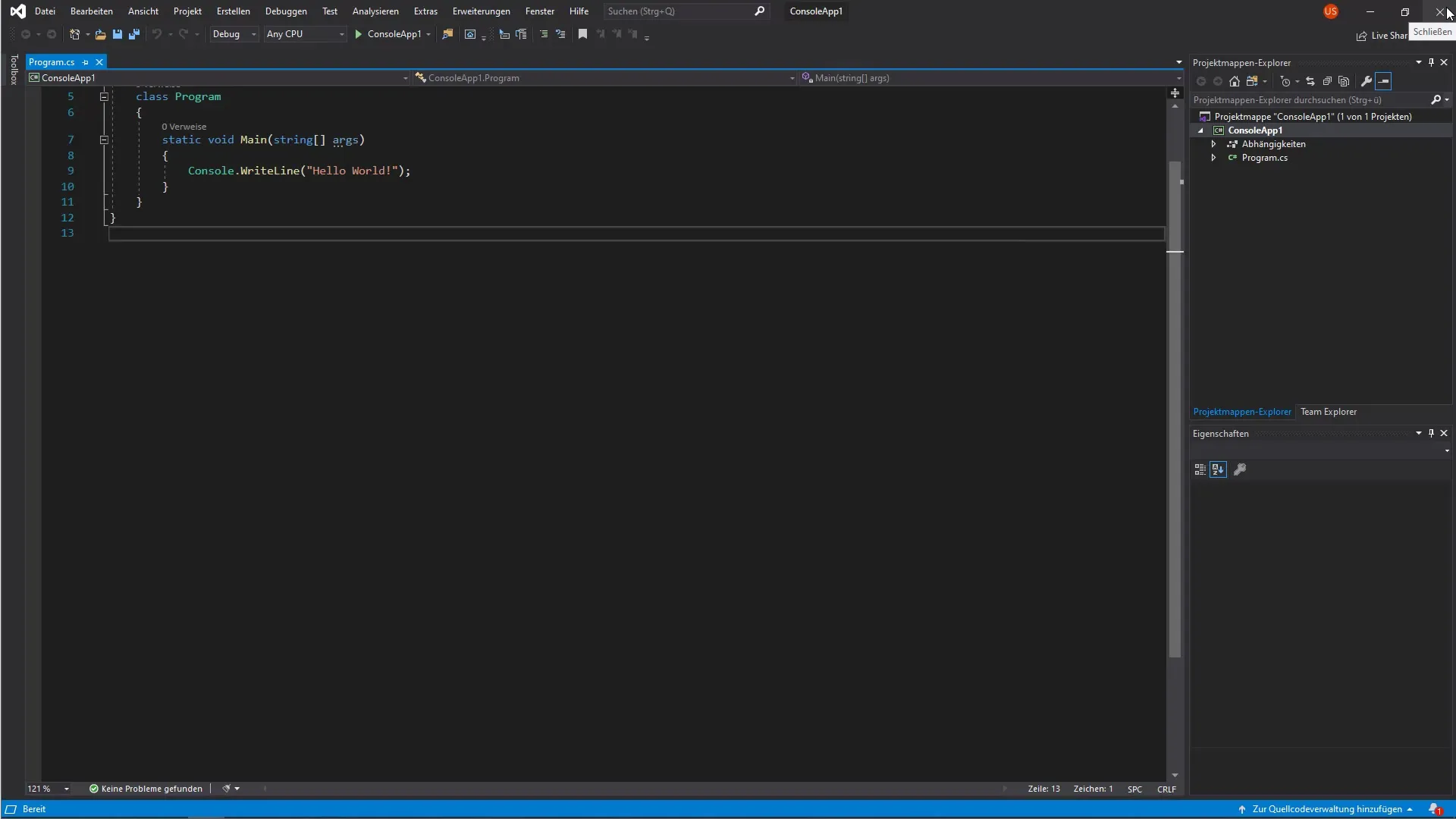
Now you must close and restart Visual Studio for the changes to take effect. After restarting, you will notice that the Visual Studio user interface is now in English. Menu options and other text elements have been translated into the new language.
Now you can not only install language packs but also additional components, depending on what features you need or which programming languages you want to use. This allows you to customize Visual Studio optimally to your needs.
In the next step of the tutorial, you will dive into the next project and start programming.
Summary - Install Components and Language Packs in Visual Studio Subsequently
You have learned how to subsequently install language packs and additional components in Visual Studio. This process is straightforward and significantly improves your user experience. With the right language and the necessary components, you are well-equipped to successfully implement your programming projects.
Frequently Asked Questions
How do I install a language pack in Visual Studio?Open the Visual Studio Installer, click on "Modify", select the desired language pack, and click on "Modify" to install it.
Can I install multiple language packs?Yes, you can install multiple language packs and switch between them.
Do I need to restart Visual Studio after installing a language pack?Yes, after you install the language pack, you need to close and restart Visual Studio for the changes to take effect.
Does adding components affect the performance of Visual Studio?Adding components can affect performance, but usually positively, by adding new features and capabilities.
